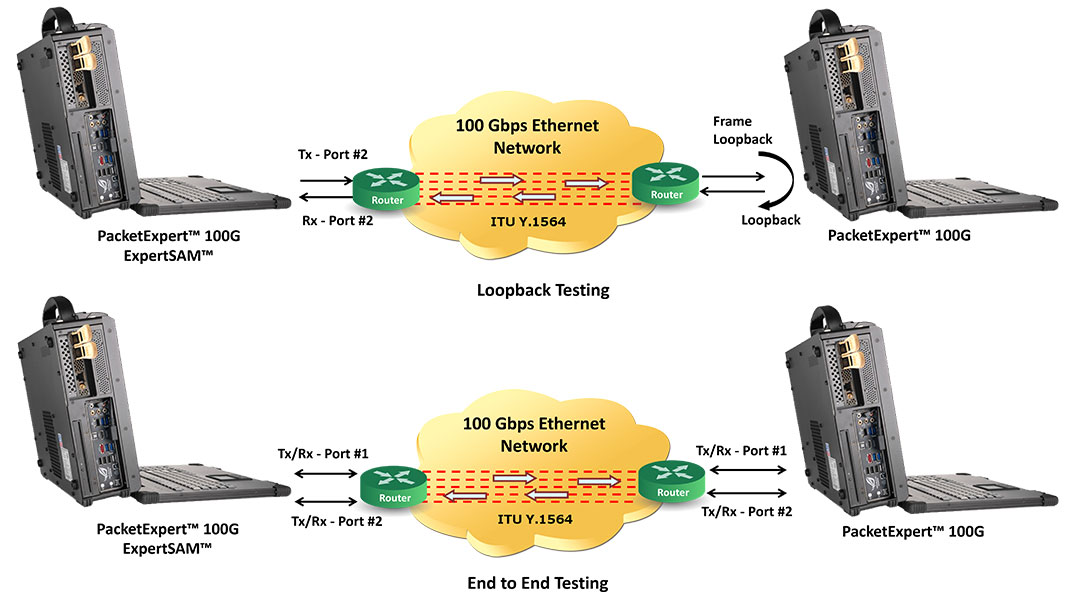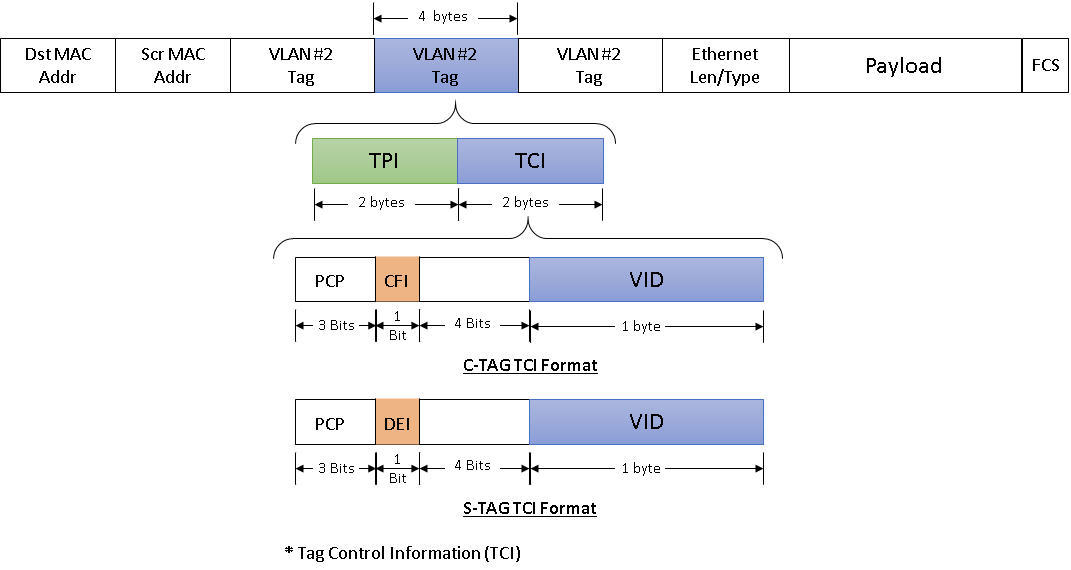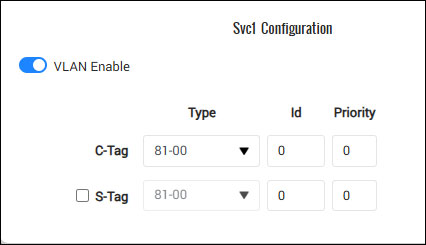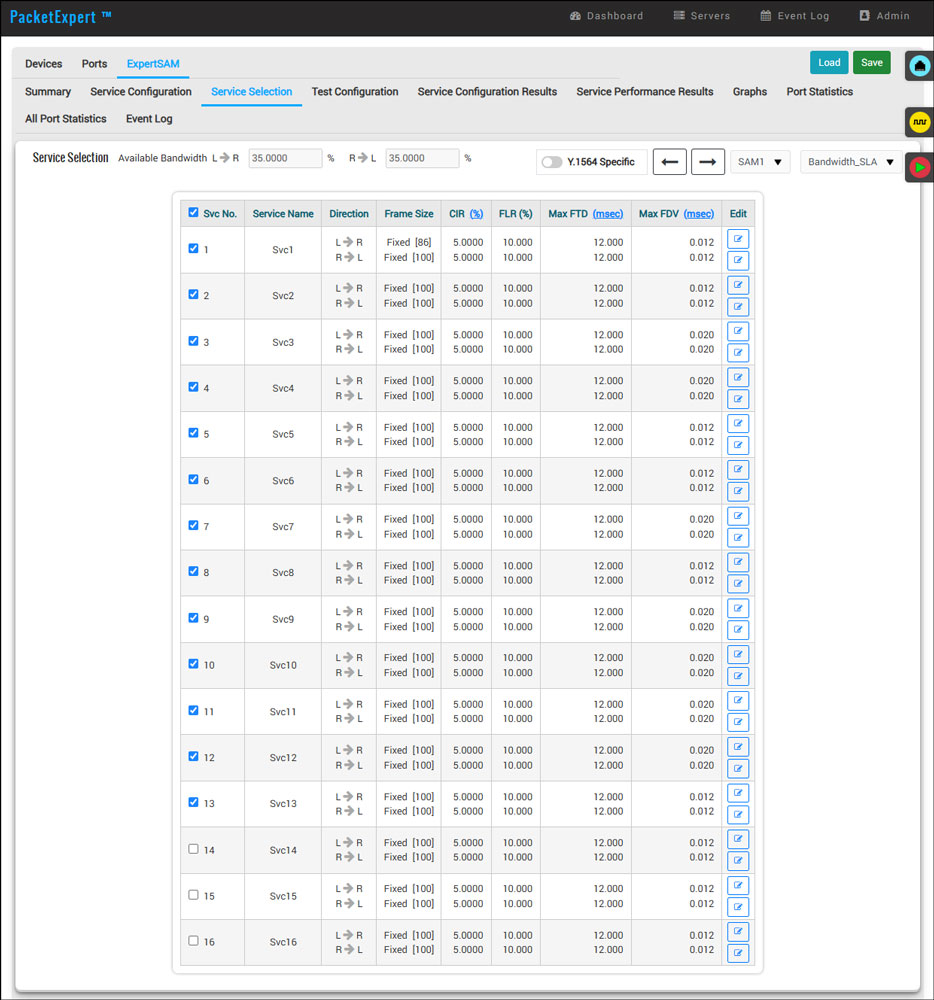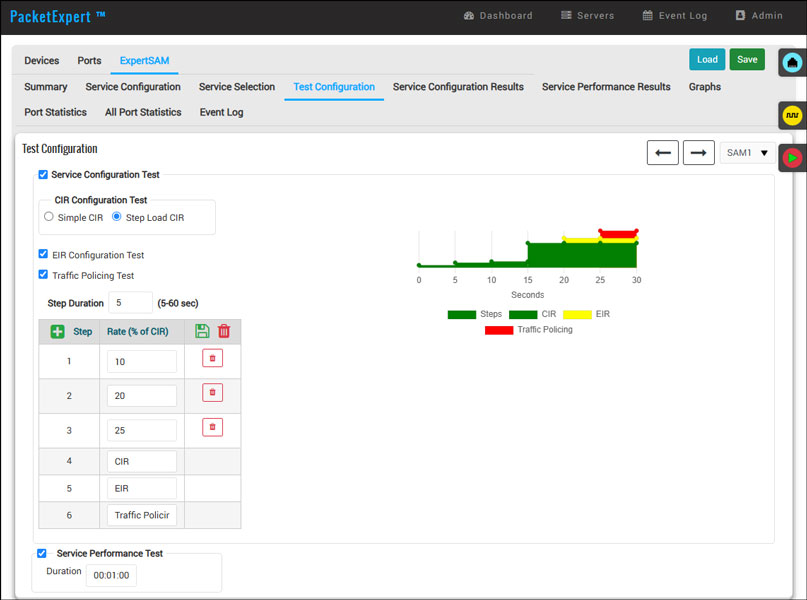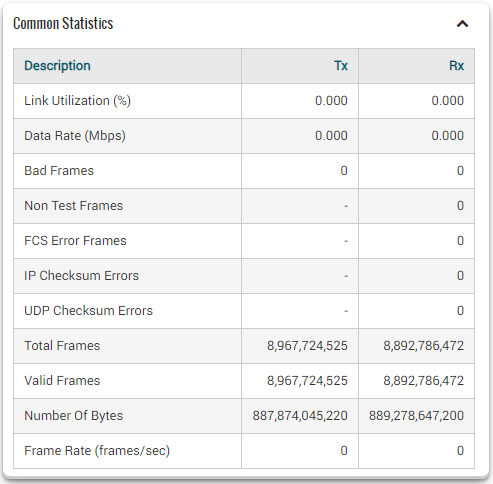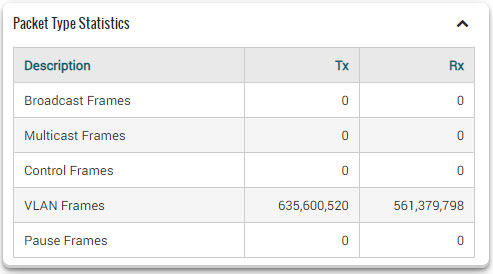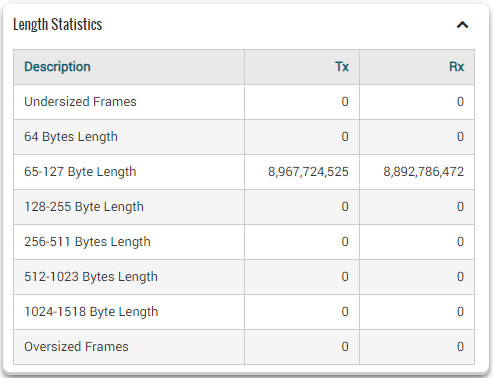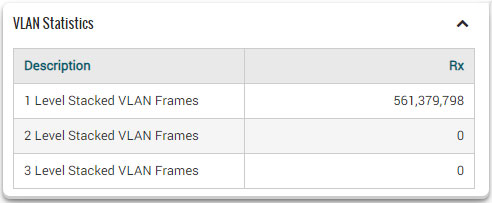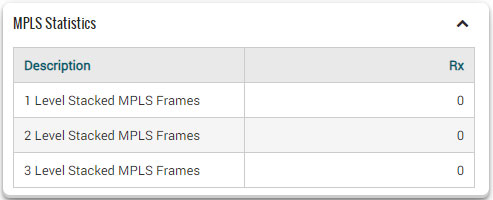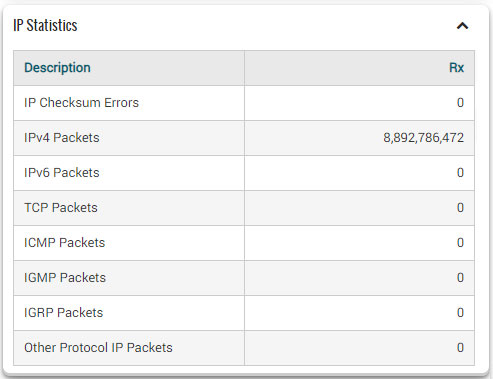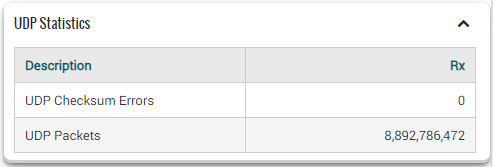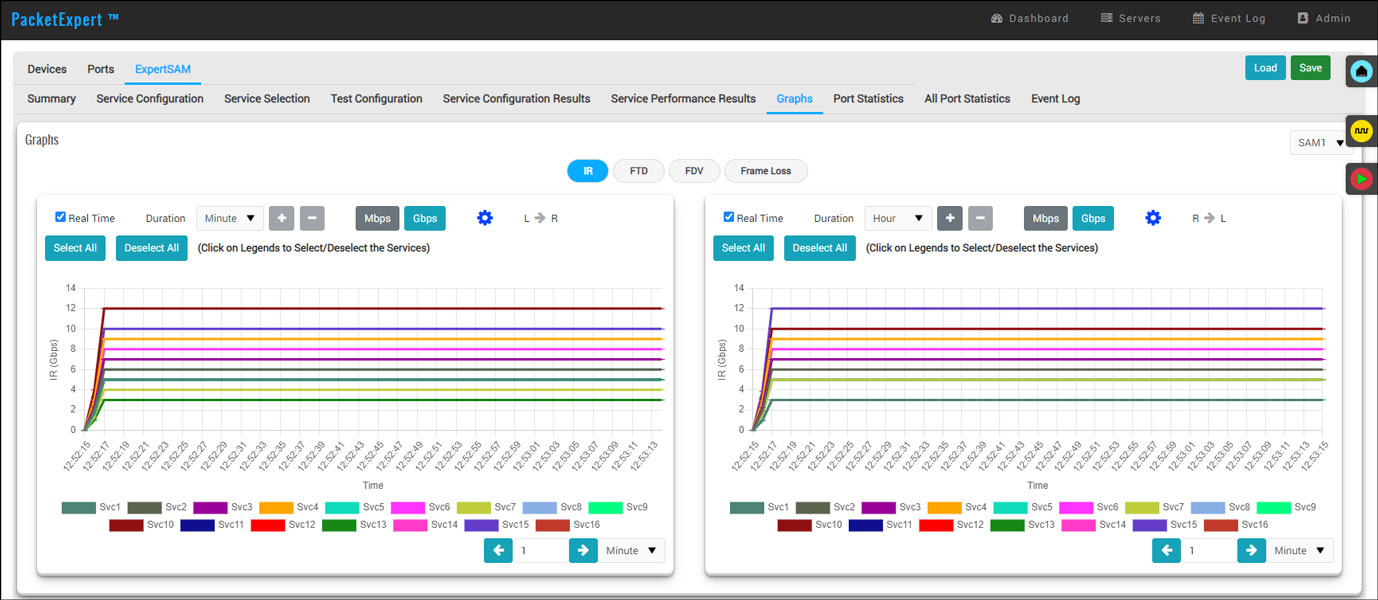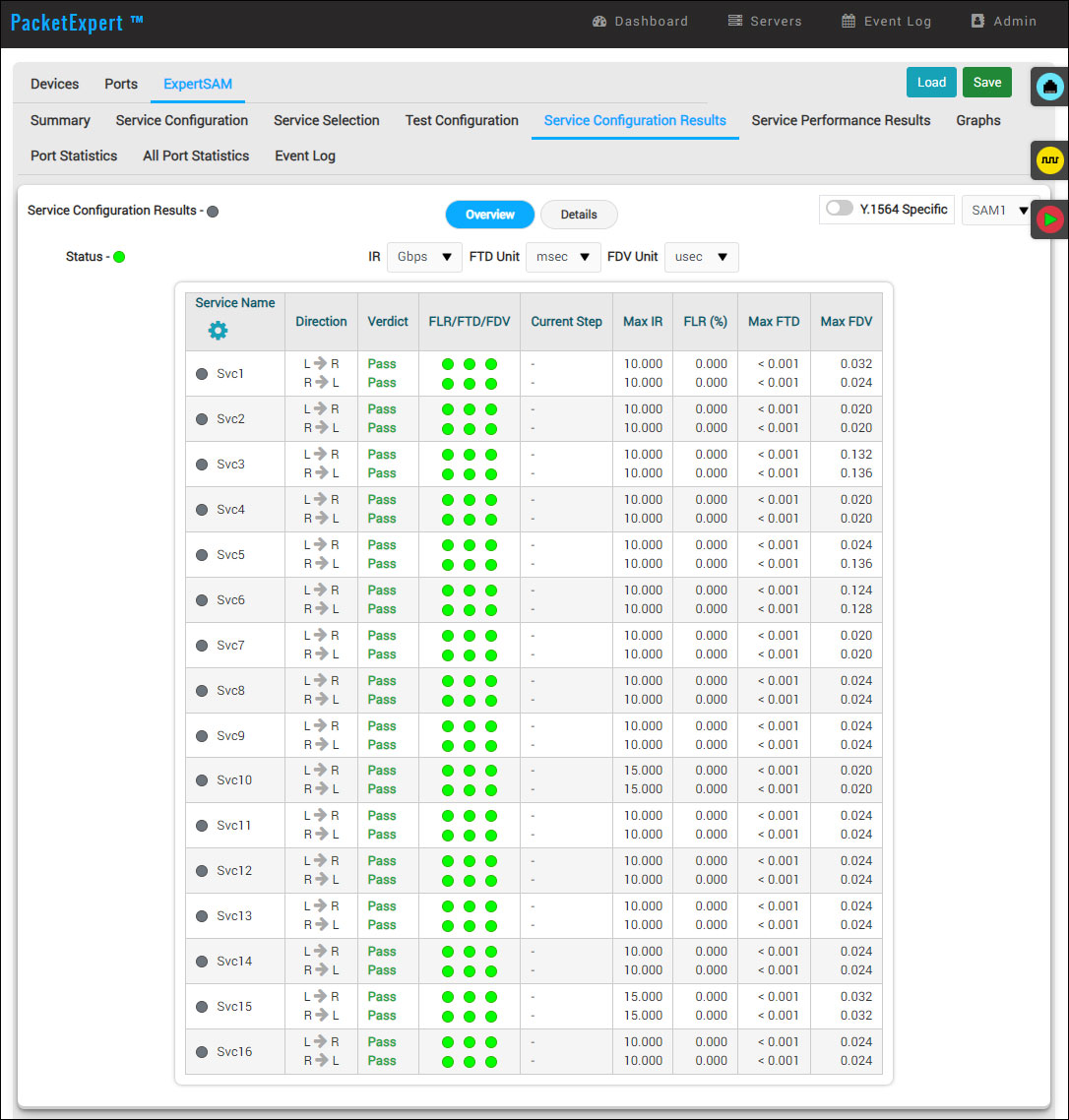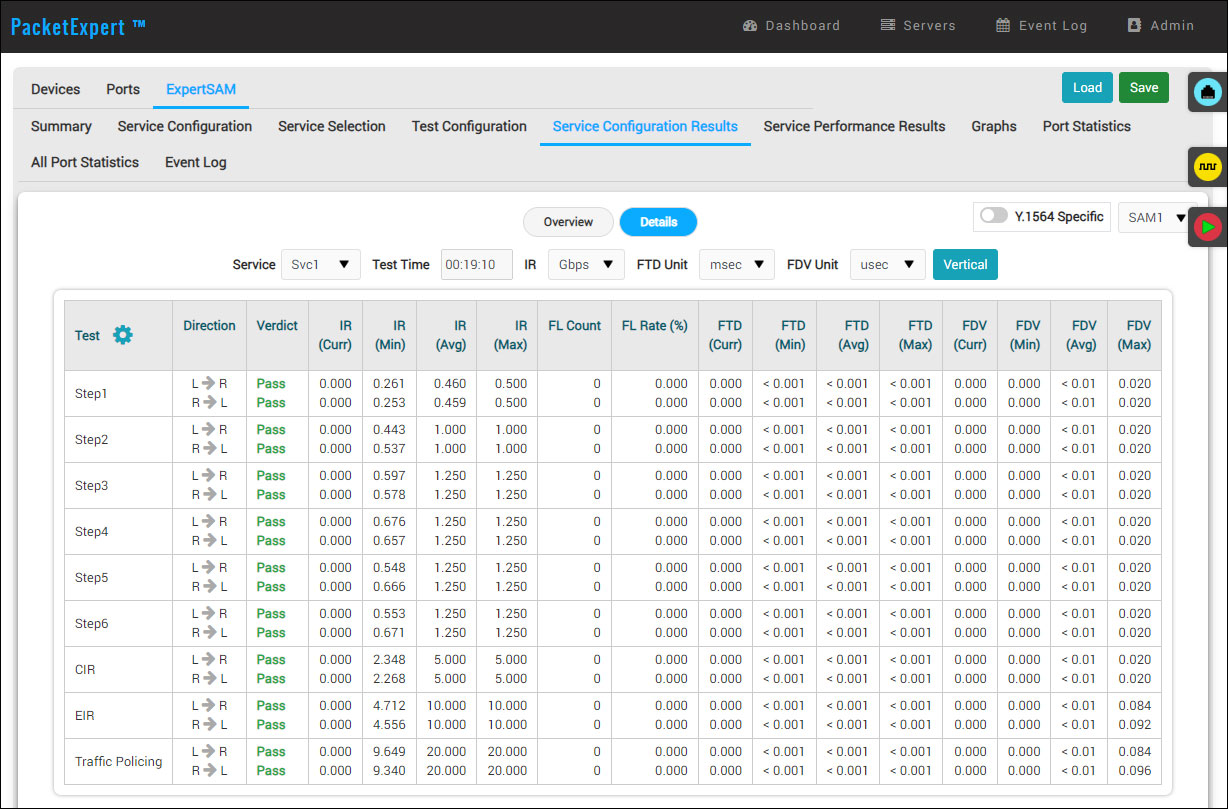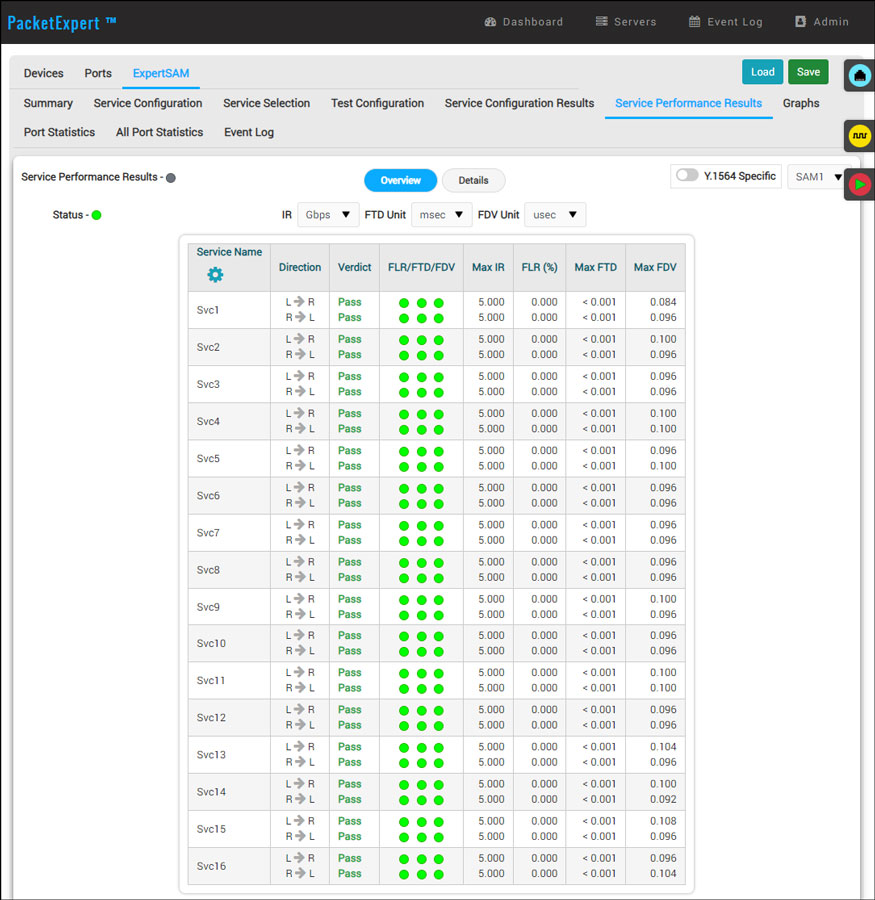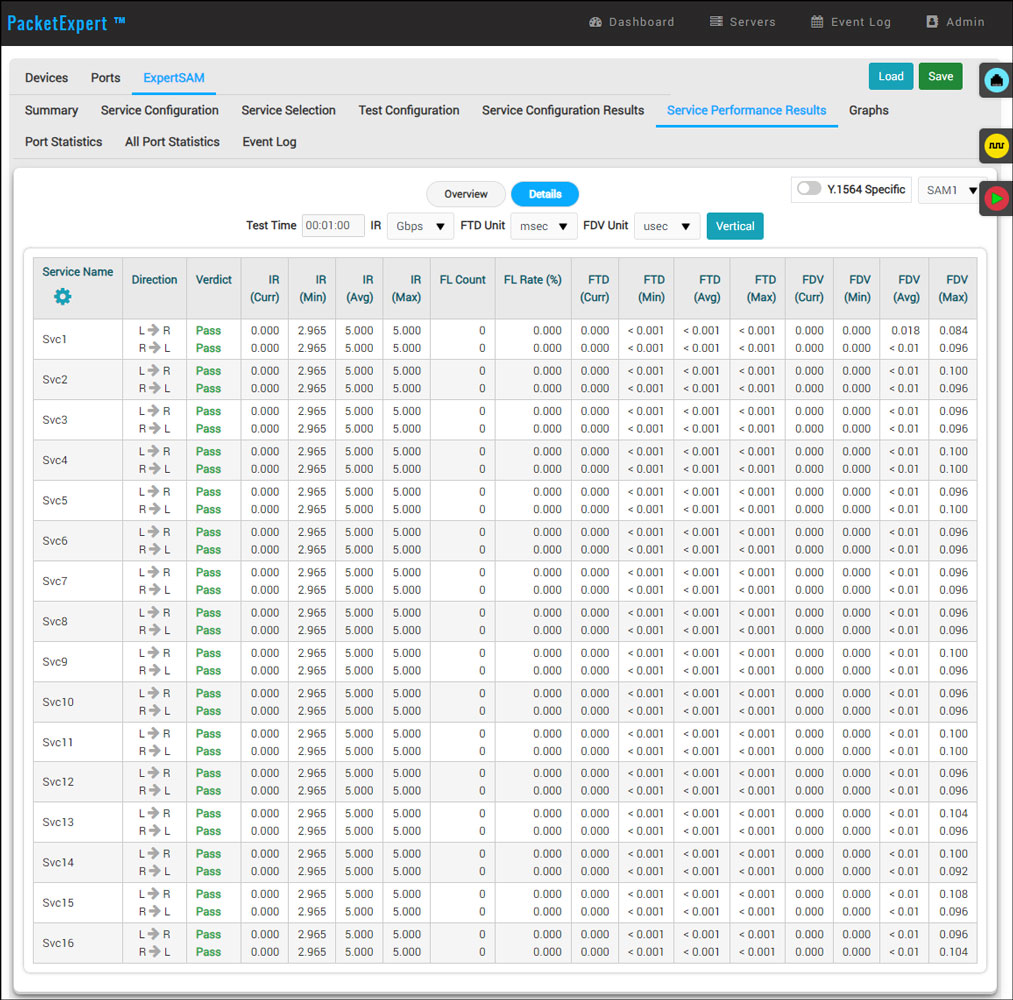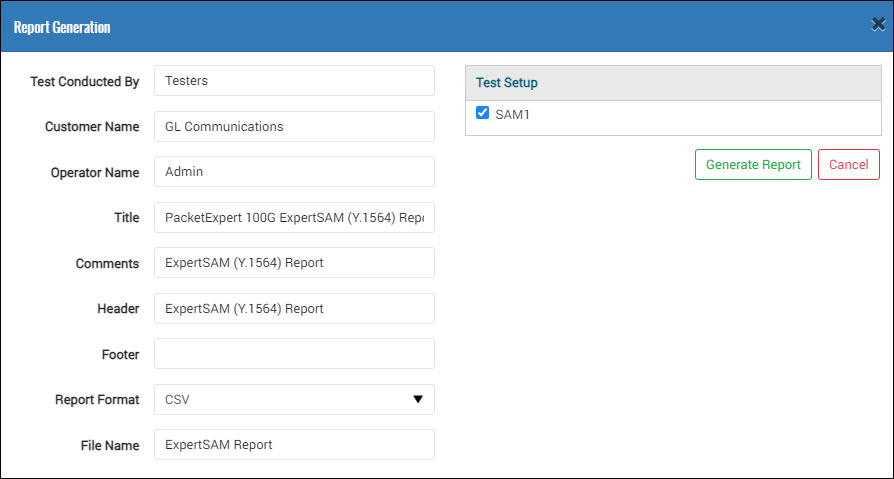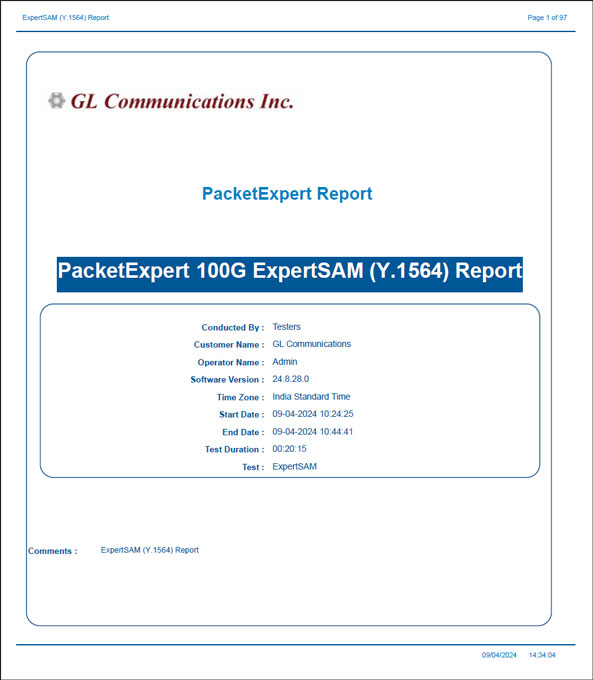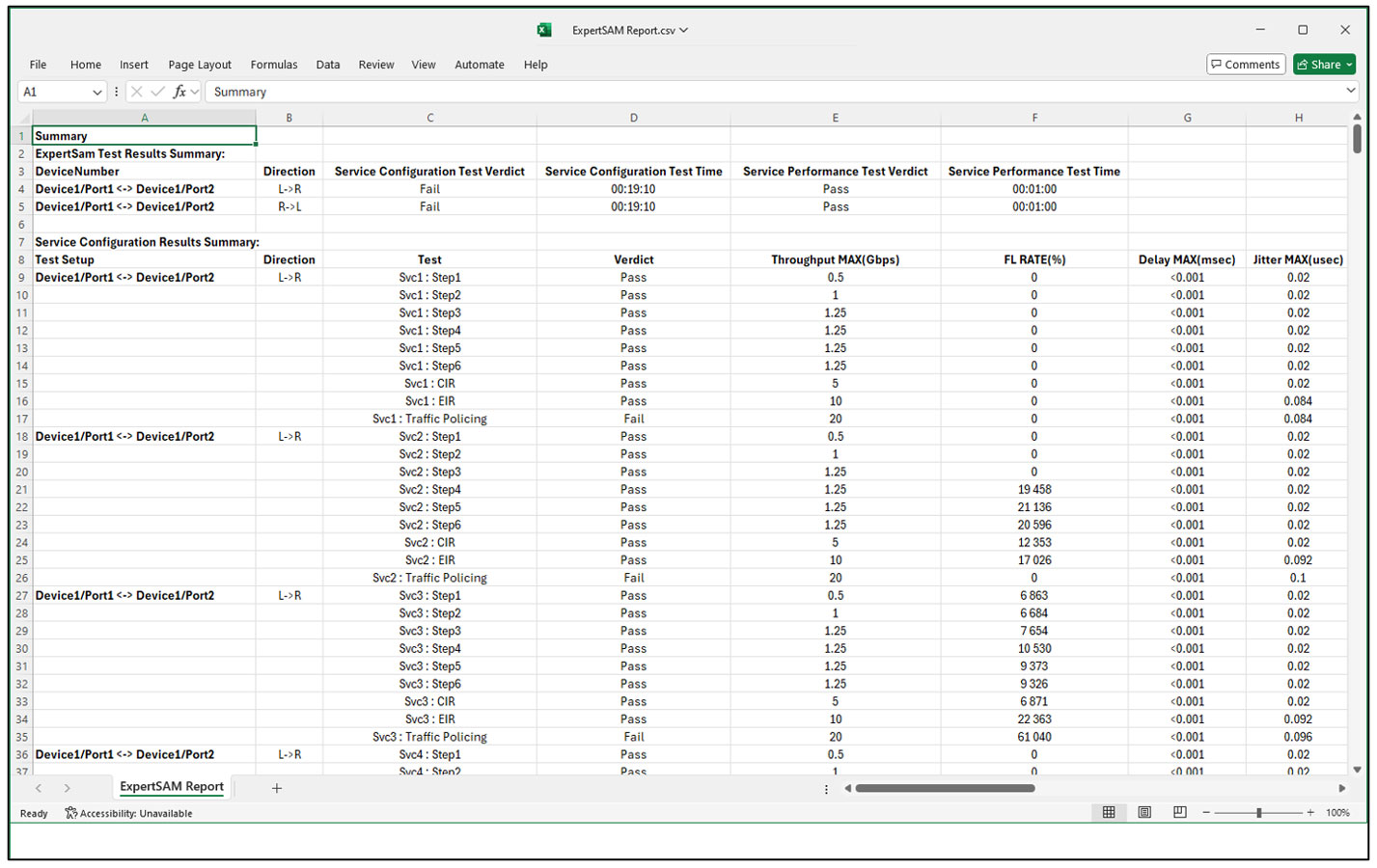ExpertSAM™ (ITU-T Y.1564) Testing with PacketExpert™ 100G
ITU-T Y.1564 is a standard Service Activation Test (SAT) methodology for carrier Ethernet, enabling comprehensive validation of Service-Level Agreements (SLAs) in a single test.
Sample Test Report
Request a Demo / Quote Brochure
Overview
GL’s ExpertSAM™ is a basic application available within the PacketExpert™ 100G.
ExpertSAM™ is designed for multiservice applications to measure the maximum performance of a Device or the Network Under Test. It consists of a set of procedures that assess the capability of Ethernet-based services to handle various types of traffic (voice, data, and video) at specified performance levels. Specifically, it aims to overcome the limitations of traditional RFC 2544 test procedures, particularly in the context of Service Level Agreements (SLA).
Key Features
- Unified SLA Validation: ExpertSAM™ is designed to validate Service Level Agreements (SLAs) according to the ITU-T Y.1564 standard, featuring two primary subtests: the Service Configuration Test and the Service Performance Test
- High Density Multi-Port: Supports flexible multi-port configurations with breakout cables, enabling 2×10G, 4×10G, as well as 2×25G, 4×25G setups. Ethernet operation via QSFP28 ports and compatible QSFP28-to-SFP adapters (8×10G and 6×25G coming soon)
- SyncE (Synchronous Ethernet): PacketExpert™ 100G continuously monitors the clock's Quality Level (QL) through a background "hearbeat" message. Any variation is immediately detected, and an event message is triggered
- Precision Time Protocol (PTP) Support: PacketExpert™ 100G uses PTP to synchronise with the master clock connected to the network to achieve accurate time across multiple devices which is essential for delay measurements in RFC 2544, ExpertSAM™ and MTGA
- Comprehensive Service Activation Testing (SAT): Complies with the ITU-T Y.1564 standard for Carrier Ethernet by assessing key parameters such as Bandwidth, Committed Information Rate (CIR), Excess Information Rate (EIR), Overshoot Traffic, Frame Loss, Frame Delay, and Frame Delay Variation
- Accurate Performance Measurements: Conducts round-trip measurements using either a remote loopback setup or a two-port ExpertSAM™ setup, with results representing the average of both Tx and Rx directions
- Python Automation and Regression Testing: Supports Test automation and regression testing via Python and REST APIs
- Comprehensive validation of Ethernet Service-Level Agreements (SLAs) in a single test
- Supports Service Configuration and Service Performance tests, compliant with the ITU-T Y.1564 standard
- Generates traffic at CIR (guaranteed traffic), EIR (best effort bandwidth), and Traffic Policing rates (dropped bandwidth) to ensure Key Performance Indicators (KPI) are met
- Offers Color Aware mode, generating traffic marked as Green or Yellow, with separate measurements for each; supports VLAN PCP, IP TOS, and IP DSCP color marking
- Supports Stacked VLAN with C-Tag (Customer Tag) and S-Tag (Service Tag) to emulate Carrier Ethernet traffic
- Each port can handle up to 16 streams, enabling the device to manage 32 services under full load conditions
- Compatible with EMIX (Ether MIX) frame sizes, supporting up to 5 different frame sizes per service
- Allows for frame lengths ranging from 64 bytes to Jumbo frames (up to 16,000 bytes)
- Simultaneously measures Information Rate (IR) or Throughput, Frame Loss Ratio (FLR), Frame Transfer Delay (FTD) or Latency, and Frame Delay Variation (FDV) or Jitter, with a Pass/Fail verdict
- Validates all services simultaneously to ensure consistent quality over time
Working Principle
Modes of Operation
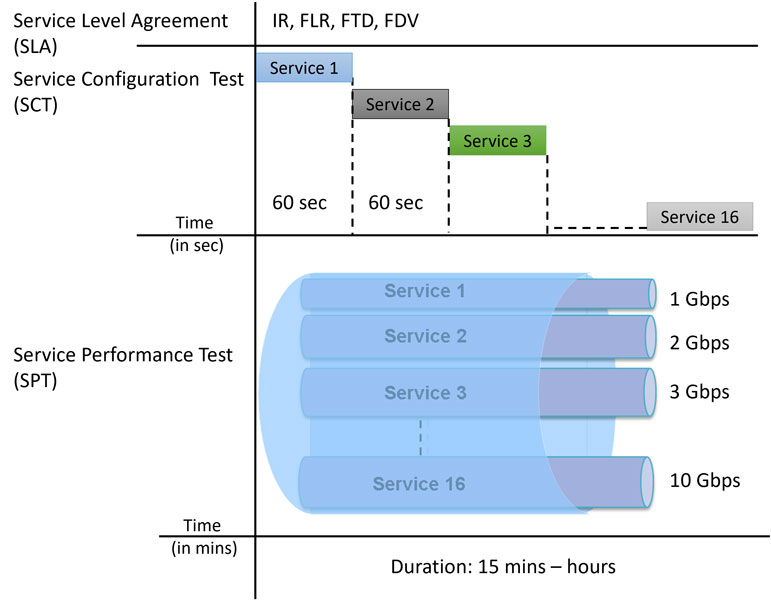
The ITU-T Y.1564 standard consists of two main subtests: the Service Configuration Test (SCT) and the Service Performance Test (SPT), conducted sequentially. To validate the network path under test, the SLA incorporates service acceptance criteria such as Frame Transfer Delay (FTD), Frame Delay Variation (FDV), and Frame Loss Ratio (FLR).
ITU-T Y.1564 defines test streams (individually called a "Test Flow") with service attributes linked to the Metro Ethernet Forum (MEF) definitions.
Service Configuration Test (SCT) includes sequential testing of each service validating the SLA parameters. A ramp test for each service is performed to verify the CIR, and EIR. Each service is validated with in the specified time duration in seconds, uniform across all the services.
Once the configuration of each service is validated, the Service Performance Test (SPT) simultaneously validates the quality of all the services traversing the network, under full load with the SLA parameters over time. The service performance test may take few minutes or can be transitioned to longer testing hours.
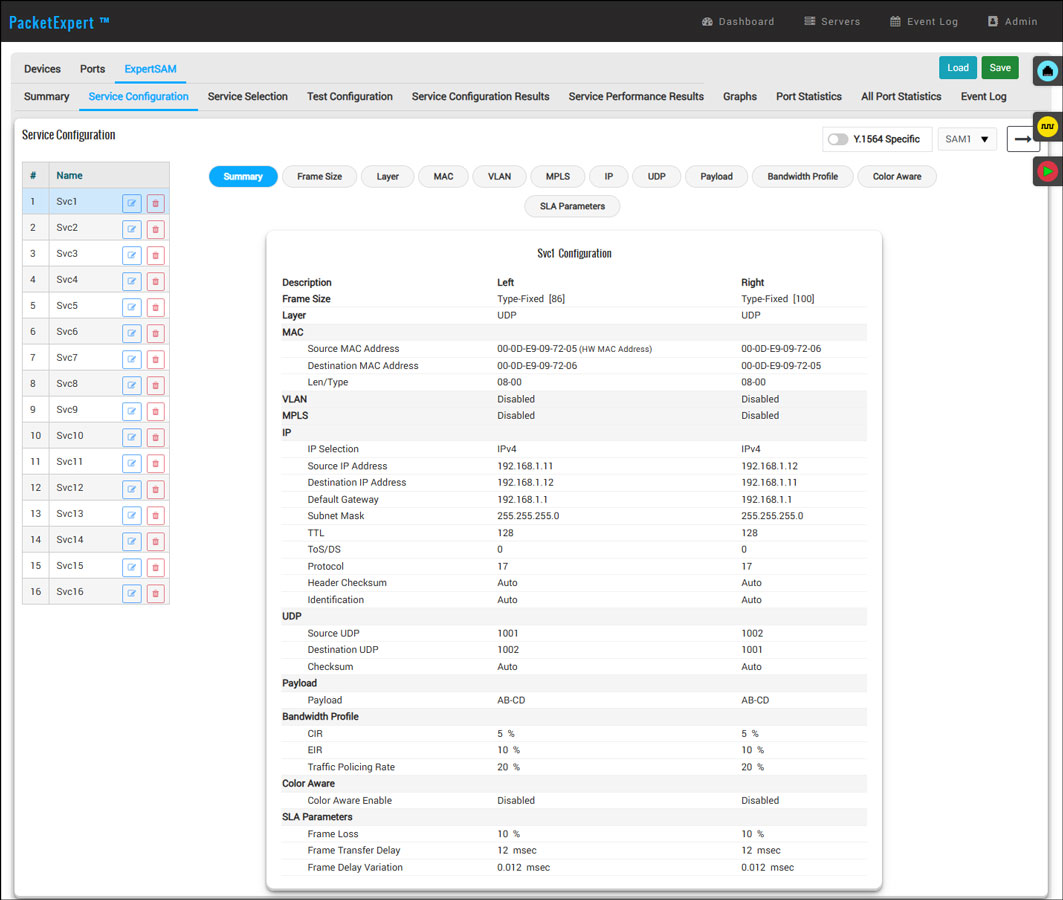
Service Configuration Summary
Service Configuration
VLAN C-Tag PCP
Service Configuration
Each Service can be configured with various attributes including Frame Size(s), Header Parameters (including VLAN Tag Information), the Bandwidth profile (CIR, EIR and Policing Rates), Color Method and Service Acceptance Criteria Parameters.
VLAN C-Tag PCP Configuration
The VLAN C-Tag TCI frame format includes a 3 bit field used to Carry Priority Information (PCP), which refers to the Class of Service and maps to the frame priority level. The field values can be used to prioritize different classes of traffic (voice, video, data, etc).
Users can configure the VLAN PCP field for each service, allowing each service to be set at a different priority level.

Bandwidth Graph
Customer traffic is classified into three classes, and each is assigned a specific color: green for committed traffic, yellow for excess traffic and discarded traffic.
- CIR, or green traffic refers to the bandwidth that is guaranteed to be available at all times for a specific service, ensuring that minimum performance objectives (i.e., key performance indicators or KPIs) are consistently met
- EIR, or yellow traffic represents excess bandwidth beyond the CIR that may be available depending on network load and usage. Minimum performance objectives are not guaranteed for this traffic
- Traffic Policing, or yellow traffic refers to traffic exceeding the CIR or CIR/EIR rate that cannot be forwarded without affecting other services. This traffic is therefore discarded
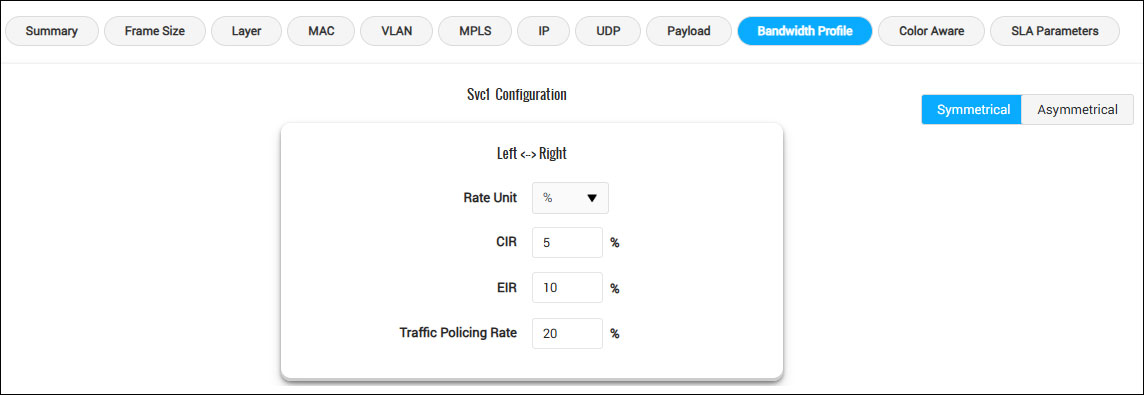
Bandwidth Profile Configuration
The user can configure the Committed Information Rate, Excess Information Rate, and Traffic Policing Rate for each stream. These rates are established during the Service Configuration test.
Color Aware
Color Aware Configuration
The ITU Y.1564 defines three key test rates, which can be associated to specific color markings:
- Green traffic is equivalent to CIR
- Yellow traffic is equivalent to EIR and discarded traffic (overshoot – CIR or overshoot – EIR)
Color Aware configuration provides user an option to mark outgoing traffic as green frames equivalent to CIR and yellow frames equivalent to EIR.

VLAN C-Tag PCP Color Method
Users can set color markings in 3 different ways – VLAN PCP field, IP TOS field or IP DSCP field. Multiple values can be provided to Green and Yellow frames.
SLA Parameters
Service Level Agreements (SLA) Parameters Configuration
The SLA defines the requirements for the network path under test, including Frame Transfer Delay (FTD), Frame Delay Variation (FDV), and Frame Loss Ratio (FLR).
- FLR: FLR parameter is typically expressed as a ratio, this is a measurement of the number of packets lost over the total number of packets sent. The Parameter is configured in % units
- FTD: FTD parameter is also known as latency, this is a measurement of the time delay between the transmission and the reception of a frame. The parameter is configured in msec units
- FDV: FDV parameter is also known as packet jitter, this is a measurement of the variations in the time delay between packet deliveries. The parameter is configured in msec units
These parameters are compared during the test with the actual measured SLA and PASS/FAIL verdict is declared per service.

SLA Parameter Configuration
Service Selection
Service selection enables user to choose any configured service or all available services (up to 16) for testing. The SLA parameters are measured and compared to the configured values for each service to validate the guaranteed traffic. Additionally, users can modify the necessary configurations as needed.
Test Configuration
Test Configuration provides an option to configure the Service Configuration Test in steps. CIR can be Simple CIR configuration or can be step rate (%) of CIR. EIR and Traffic Policing if configured forms other steps. Each step duration can be configured from 1 to 60 secs. The service performance test duration can be configured to be performed within few minutes, or to be transitioned to longer testing hours.
Port Statistics
Detailed statistics per port are provided, parameters include Frame Count, Frame Rate, Link Utilization, others are provided based on various categories like Frame Type (Unicast/Broadcast/Multicast, VLAN), frame lengths (64, 65-127, 1024-1518, Oversized, Undersized), Protocol Type (IPv4, IPv6, UDP, TCP, ICMP, IGRP, etc). VLAN Statistics (per Stack position), are also displayed for the configured stacks.
All Port Loopback Statistics
Results
Result Summary
The result summary offers a quick view of the test's overall outcome and status.
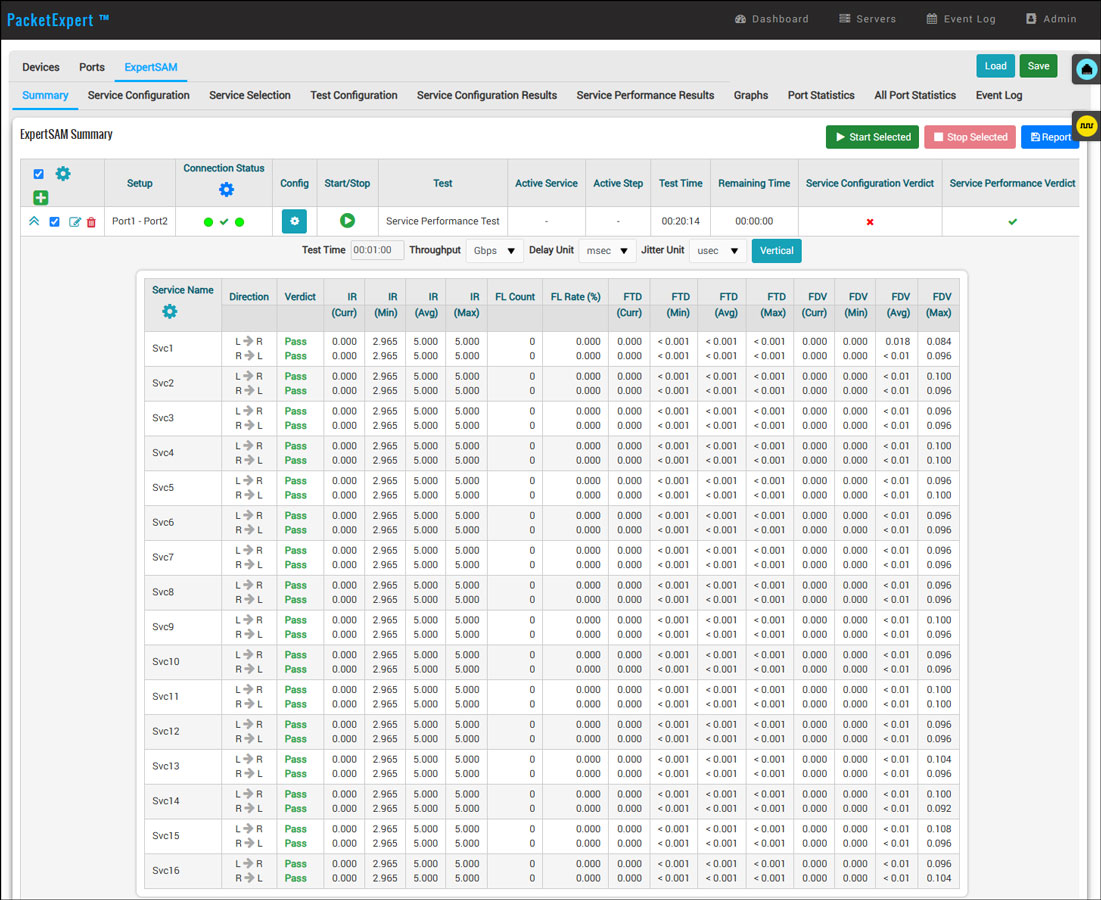
Result Summary
Service Configuration Test Results
The Service Configuration Results Overview pane displays the Service Name for which the test is running, the Verdict of the configuration test, Current Step of the service (CIR/EIR/Traffic Policing), Max IR (Mbps), FLR (%), Max FTD (msec), and Max FDV (msec) parameters for each configured service.
Each Service Configuration test result is detailed with IR (Mbps), FLR (%), FTD (msec), and FDV (msec) parameter measurement display. For each measured parameter, the min, mean and max values are displayed. Green and Yellow frames measurements are provided separately (for Color Aware mode). The verdict for each step for each service is reported after the completion of the test.
Service Performance Test Results
Once the configuration of each service is validated, the service performance test simultaneously validates the quality of all the services over time. The service performance results display includes all Key Performance Indicators (KPIs) parameter results for each service - IR, FLR, FTD, FDV (Current, Minimum, Mean, & Maximum).
